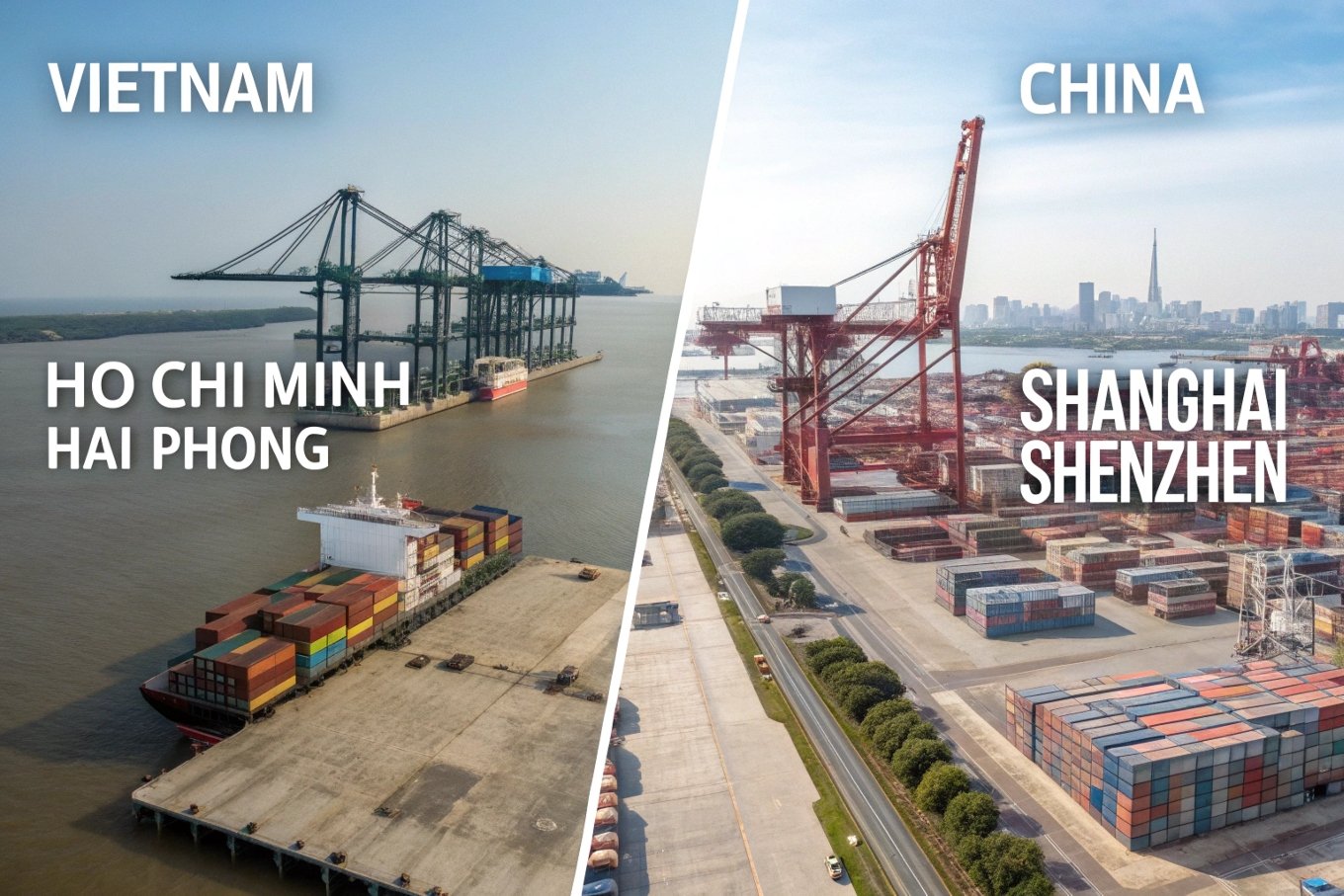
When considering exporting goods from Vietnam, understanding the differences in port infrastructure and customs procedures compared to China is critical. Both countries have developed extensive port systems, but the efficiency, logistics, and customs processes differ, which can impact your shipping timeline and costs.
Vietnam’s ports, including Ho Chi Minh and Hai Phong, offer competitive advantages but also face challenges in terms of infrastructure and customs procedures. These differences can impact delivery times and costs when compared to China.
In this article, we will compare Vietnam’s ports and customs systems with China’s, exploring key shipping ports, common problems, and proximity of major cities to ports.
What Are the Main Shipping Ports in Vietnam?
Vietnam has several key ports that serve as gateways for international trade. The most prominent ones include Ho Chi Minh City’s Cat Lai Port, Hai Phong Port, and Da Nang Port.
The major ports in Vietnam are strategically located to facilitate shipping to and from key global markets. However, each port has its unique strengths and challenges in terms of capacity, congestion, and customs efficiency.
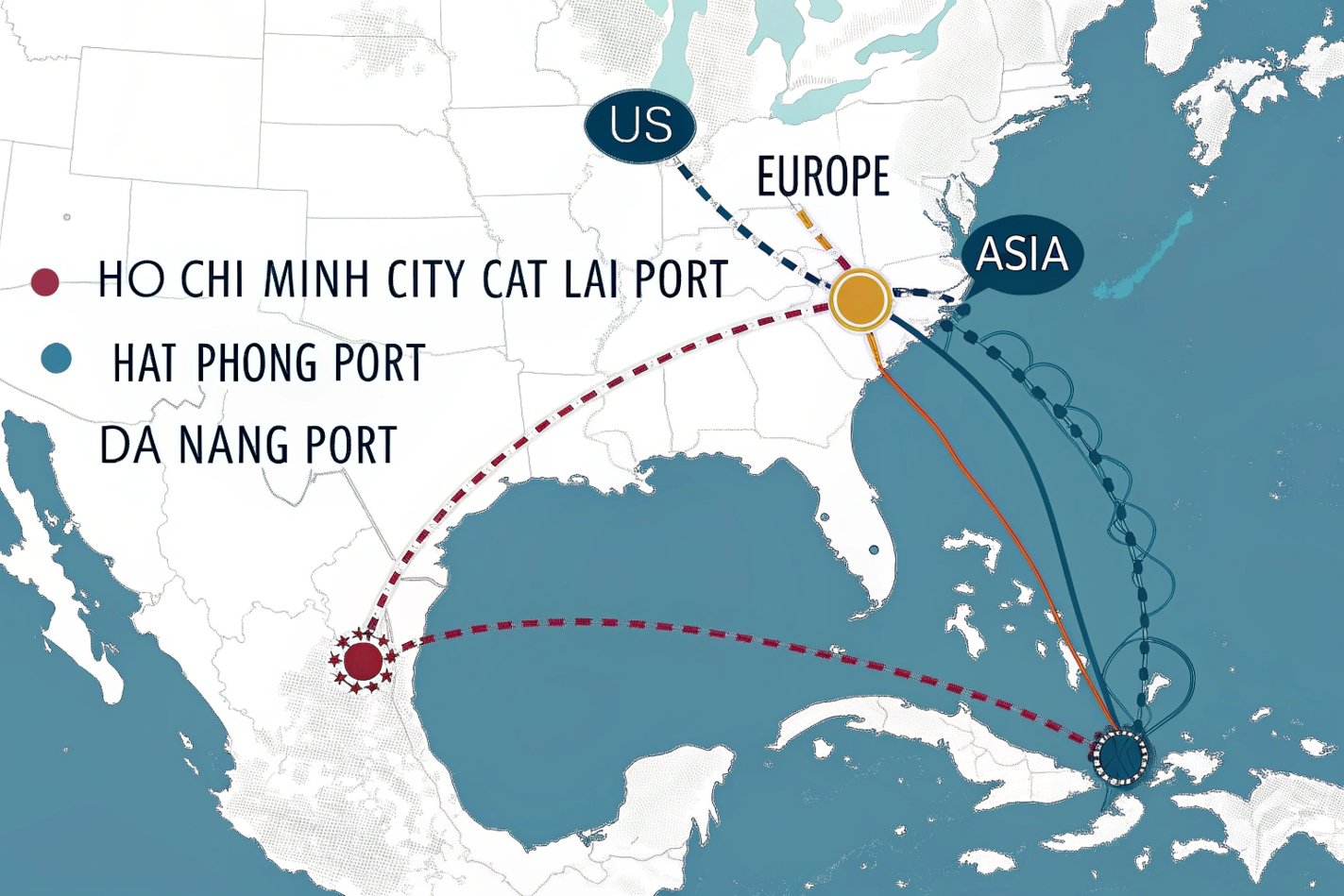
-
Ho Chi Minh City – Cat Lai Port1:
- Located in the southern part of the country, Cat Lai Port is the largest and busiest port in Vietnam. It handles a significant portion of the country’s container traffic, especially for shipments to and from Asia, Europe, and the United States.
-
- Situated in the north, Hai Phong is the second-largest port in Vietnam. It is a vital hub for northern exports, particularly for goods coming from Hanoi and surrounding regions.
-
- Although smaller than Ho Chi Minh City and Hai Phong, Da Nang serves as an important regional port, primarily for central Vietnam and nearby areas.
Main Shipping Ports in Vietnam:
| Port Name | Location | Significance |
|---|---|---|
| Cat Lai Port | Ho Chi Minh City | Largest port, handles high container traffic |
| Hai Phong Port | Hai Phong | Key northern port, crucial for exports from Hanoi |
| Da Nang Port | Da Nang | Regional hub for central Vietnam |
These ports are essential for Vietnam’s trade infrastructure and serve different regions with distinct advantages and challenges.
What Is the Problem with Ports in Vietnam?
While Vietnam’s ports are essential for international trade, there are several challenges that can impact their efficiency. These include congestion, limited infrastructure, and long clearance times at customs.
Port congestion, particularly in Ho Chi Minh City, can significantly delay shipping times. Moreover, the lack of modern equipment and specialized infrastructure at some ports hampers the overall logistics process.
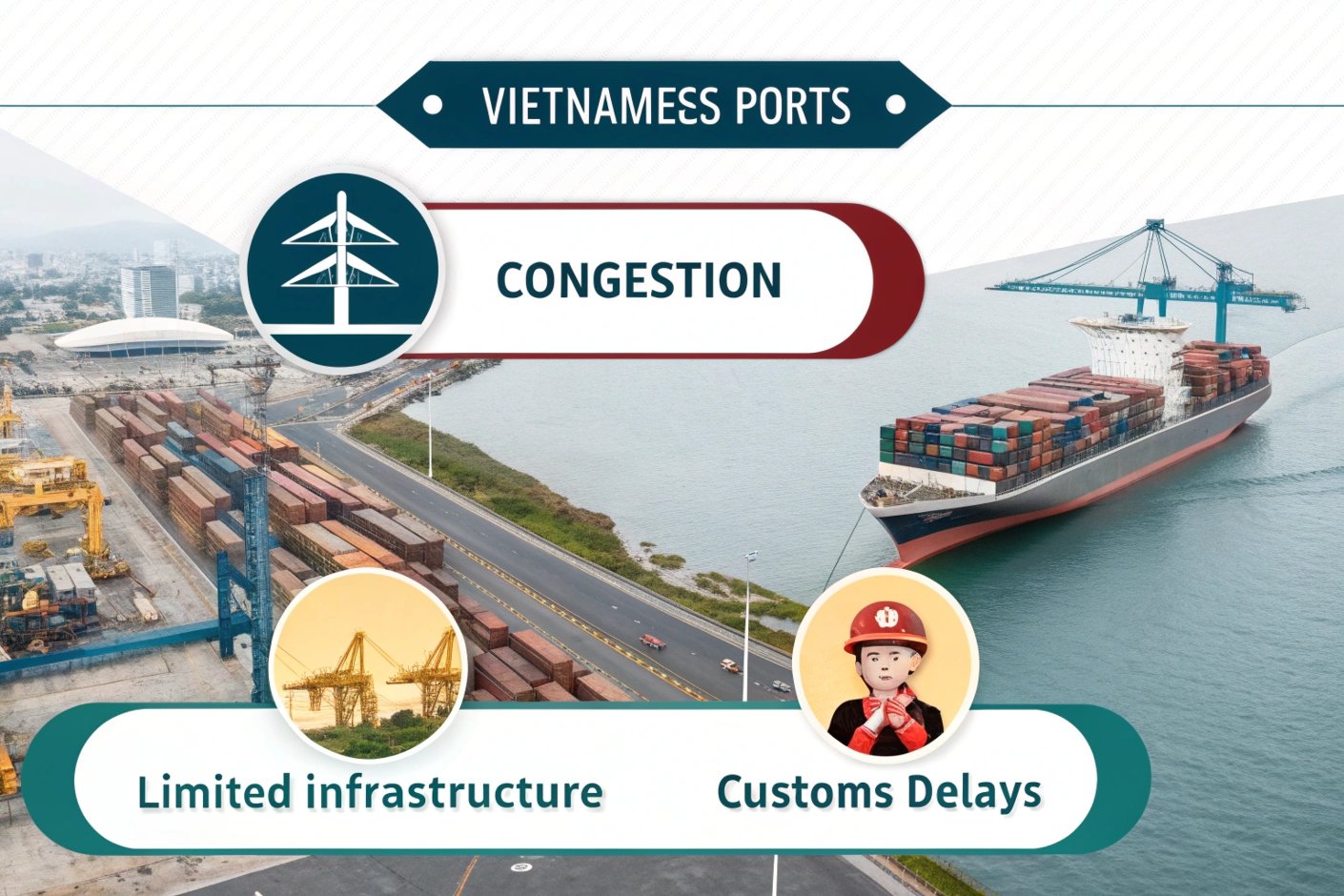
-
Congestion4: Ports in Vietnam, especially Cat Lai in Ho Chi Minh, can experience significant congestion, particularly during peak seasons. This leads to delays in loading and unloading containers, which impacts overall shipping timelines.
-
Limited Infrastructure5: While the major ports are expanding, many still face limitations in terms of container handling capacity, modern cranes, and efficient terminals. This can slow down the overall logistics process.
-
Customs Efficiency6: Customs clearance in Vietnam can sometimes be slower than in China. While Vietnam has made strides in improving customs processes, it still lags behind China in terms of automation and streamlined procedures, causing delays at port entry points.
Challenges of Ports in Vietnam:
| Issue | Impact on Shipping | Solution/Considerations |
|---|---|---|
| Congestion | Delays in unloading/loading | Plan shipments during off-peak times, consider alternate ports |
| Limited Infrastructure | Slower processing times | Invest in modern equipment, work with experienced logistics providers |
| Slow Customs Procedures | Delayed clearance | Ensure proper documentation, work with reliable customs brokers |
These issues can increase lead times, especially for urgent shipments.
What Is the Nearest Port to Hanoi and Ho Chi Minh?
The proximity of a city to its nearest port plays a significant role in shipping efficiency. In Vietnam, Hanoi and Ho Chi Minh City are the two largest urban centers, but their closest ports are located at varying distances.
Ho Chi Minh City, being in the south, has easy access to Cat Lai Port, which is only a short drive away. In contrast, Hanoi, located in the north, relies on Hai Phong Port for most of its international shipments.
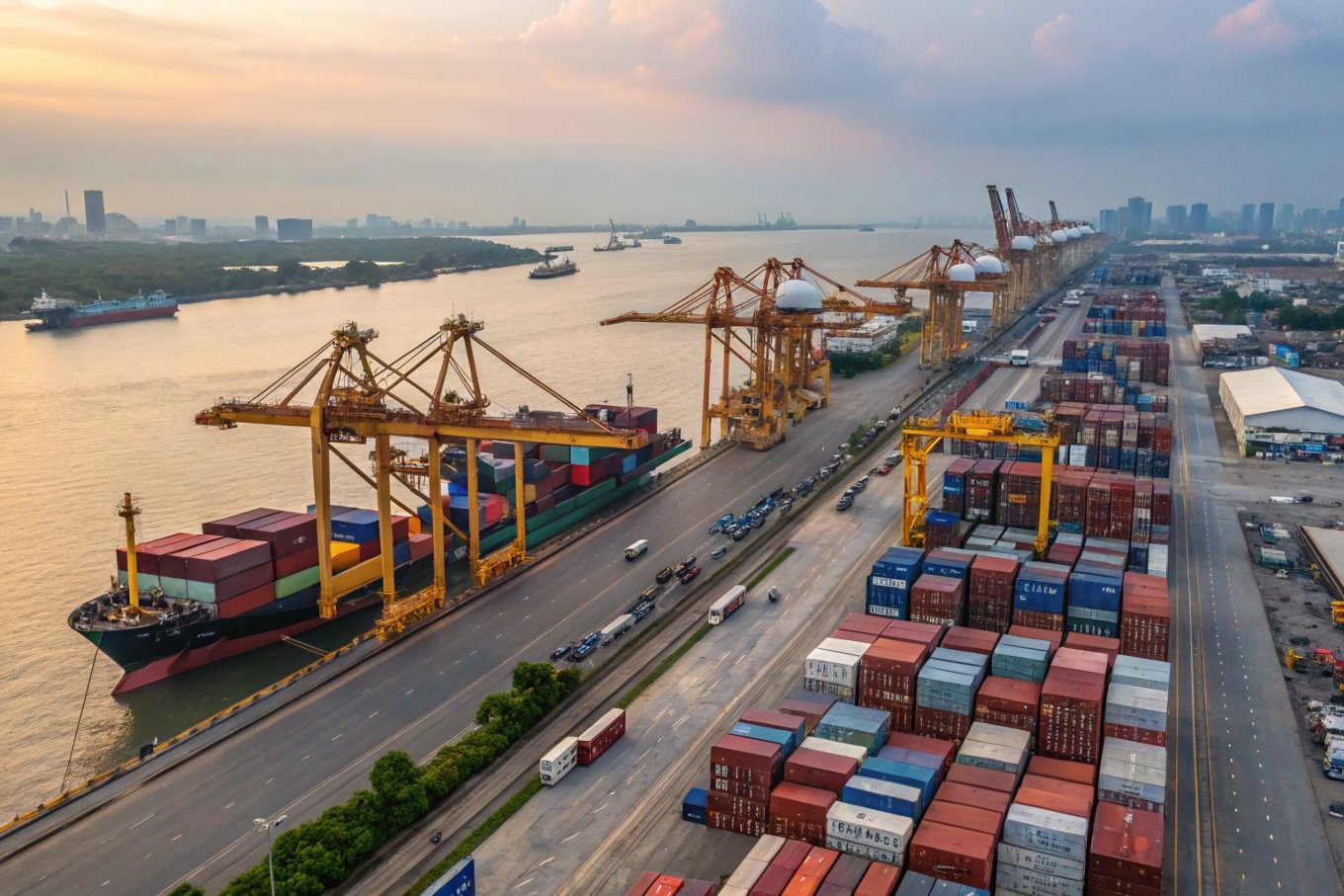
-
Hanoi: The nearest major port to Hanoi is Hai Phong Port, approximately 100 kilometers away. This makes Hai Phong a key port for shipments originating in the northern part of the country, including Hanoi.
-
Ho Chi Minh City: Ho Chi Minh City has easy access to Cat Lai Port, which is located just 10 kilometers from the city center. This proximity makes Ho Chi Minh City a major hub for trade with both Asia and other international markets.
Port Proximity to Major Cities:
| City | Nearest Port | Distance to Port |
|---|---|---|
| Hanoi | Hai Phong Port | ~100 km |
| Ho Chi Minh City | Cat Lai Port | ~10 km |
The proximity of Ho Chi Minh City to its port makes it a significant export hub, while Hanoi’s reliance on Hai Phong means slightly longer transit times for goods coming from the north.
Is Ho Chi Minh City a Port City?
Yes, Ho Chi Minh City is a port city, primarily due to its proximity to Cat Lai Port, the largest and busiest port in Vietnam. Located along the Saigon River, the city serves as a critical hub for imports and exports, not only for the southern region but for the entire country.
The city’s strategic location, combined with its extensive port infrastructure, makes it an important center for logistics and international trade.
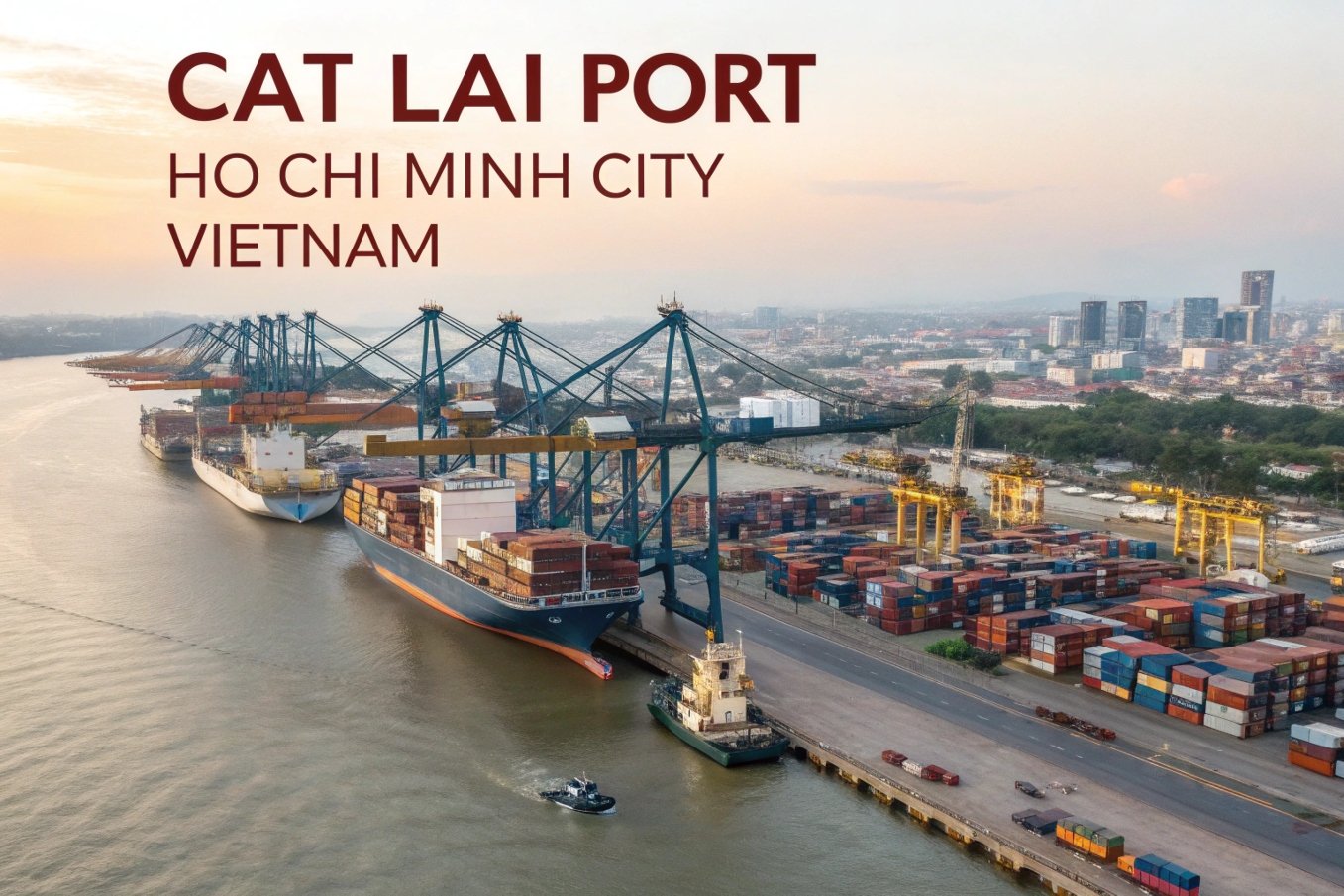
Ho Chi Minh City’s role as a port city has contributed to its status as Vietnam’s economic powerhouse. It is home to the largest concentration of factories, warehouses, and logistics companies, all of which rely on efficient port operations for global trade.
Port City Status of Ho Chi Minh:
| Feature | Detail |
|---|---|
| Key Port | Cat Lai Port |
| Economic Significance | Largest industrial and trade hub |
| Logistics Infrastructure | Extensive, with numerous warehouses and transportation links |
Ho Chi Minh’s importance as a port city cannot be overstated—it serves as the focal point for Vietnam’s exports and imports, particularly for trade with Europe, the US, and Asia.
Conclusion
Vietnam’s ports, such as Ho Chi Minh City’s Cat Lai and Hai Phong, play a crucial role in the country’s export-driven economy. While they offer key advantages, such as proximity to major cities and strategic locations, challenges like congestion, limited infrastructure, and slower customs clearance times can impact shipping efficiency. Understanding these factors can help businesses plan better and manage their shipping timelines effectively.
-
Explore the unique strengths of Cat Lai Port, the largest in Vietnam, and its role in international trade. ↩
-
Discover how Hai Phong Port supports northern exports and its significance in Vietnam’s trade network. ↩
-
Learn about Da Nang Port’s role as a regional hub and its impact on central Vietnam’s economy. ↩
-
Understanding congestion in ports can help businesses plan better and mitigate delays in shipping. ↩
-
Exploring infrastructure challenges can provide insights into potential improvements and logistics strategies. ↩
-
Learning about customs efficiency can help businesses navigate and streamline their shipping processes effectively. ↩

